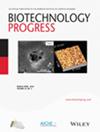下载PDF
{"title":"Surface functionalization of nanobiomaterials for application in stem cell culture, tissue engineering, and regenerative medicine","authors":"Deepti Rana, Keerthana Ramasamy, Maria Leena, Constanza Jiménez, Javier Campos, Paula Ibarra, Ziyad S. Haidar, Murugan Ramalingam","doi":"10.1002/btpr.2262","DOIUrl":null,"url":null,"abstract":"<p>Stem cell-based approaches offer great application potential in tissue engineering and regenerative medicine owing to their ability of sensing the microenvironment and respond accordingly (dynamic behavior). Recently, the combination of nanobiomaterials with stem cells has paved a great way for further exploration. Nanobiomaterials with engineered surfaces could mimic the native microenvironment to which the seeded stem cells could adhere and migrate. Surface functionalized nanobiomaterial-based scaffolds could then be used to regulate or control the cellular functions to culture stem cells and regenerate damaged tissues or organs. Therefore, controlling the interactions between nanobiomaterials and stem cells is a critical factor. However, surface functionalization or modification techniques has provided an alternative approach for tailoring the nanobiomaterials surface in accordance to the physiological surrounding of a living cells; thereby, enhancing the structural and functional properties of the engineered tissues and organs. Currently, there are a variety of methods and technologies available to modify the surface of biomaterials according to the specific cell or tissue properties to be regenerated. This review highlights the trends in surface modification techniques for nanobiomaterials and the biological relevance in stem cell-based tissue engineering and regenerative medicine. © 2016 American Institute of Chemical Engineers Biotechnol. Prog., 32:554–567, 2016</p>","PeriodicalId":8856,"journal":{"name":"Biotechnology Progress","volume":"32 3","pages":"554-567"},"PeriodicalIF":2.5000,"publicationDate":"2016-03-23","publicationTypes":"Journal Article","fieldsOfStudy":null,"isOpenAccess":false,"openAccessPdf":"https://sci-hub-pdf.com/10.1002/btpr.2262","citationCount":"35","resultStr":null,"platform":"Semanticscholar","paperid":null,"PeriodicalName":"Biotechnology Progress","FirstCategoryId":"5","ListUrlMain":"https://onlinelibrary.wiley.com/doi/10.1002/btpr.2262","RegionNum":3,"RegionCategory":"生物学","ArticlePicture":[],"TitleCN":null,"AbstractTextCN":null,"PMCID":null,"EPubDate":"","PubModel":"","JCR":"Q3","JCRName":"BIOTECHNOLOGY & APPLIED MICROBIOLOGY","Score":null,"Total":0}
引用次数: 35
引用
批量引用
Abstract
Stem cell-based approaches offer great application potential in tissue engineering and regenerative medicine owing to their ability of sensing the microenvironment and respond accordingly (dynamic behavior). Recently, the combination of nanobiomaterials with stem cells has paved a great way for further exploration. Nanobiomaterials with engineered surfaces could mimic the native microenvironment to which the seeded stem cells could adhere and migrate. Surface functionalized nanobiomaterial-based scaffolds could then be used to regulate or control the cellular functions to culture stem cells and regenerate damaged tissues or organs. Therefore, controlling the interactions between nanobiomaterials and stem cells is a critical factor. However, surface functionalization or modification techniques has provided an alternative approach for tailoring the nanobiomaterials surface in accordance to the physiological surrounding of a living cells; thereby, enhancing the structural and functional properties of the engineered tissues and organs. Currently, there are a variety of methods and technologies available to modify the surface of biomaterials according to the specific cell or tissue properties to be regenerated. This review highlights the trends in surface modification techniques for nanobiomaterials and the biological relevance in stem cell-based tissue engineering and regenerative medicine. © 2016 American Institute of Chemical Engineers Biotechnol. Prog., 32:554–567, 2016
纳米生物材料的表面功能化在干细胞培养、组织工程和再生医学中的应用
基于干细胞的方法由于能够感知微环境并做出相应的反应(动态行为),在组织工程和再生医学中具有很大的应用潜力。近年来,纳米生物材料与干细胞的结合为进一步探索铺平了道路。具有工程表面的纳米生物材料可以模拟原生微环境,从而使种子干细胞能够粘附和迁移。表面功能化的纳米生物材料支架可用于调节或控制细胞功能,以培养干细胞和再生受损组织或器官。因此,控制纳米生物材料与干细胞之间的相互作用是一个关键因素。然而,表面功能化或修饰技术提供了一种根据活细胞的生理环境定制纳米生物材料表面的替代方法;从而增强工程组织和器官的结构和功能特性。目前,有多种方法和技术可以根据要再生的特定细胞或组织的特性来修饰生物材料的表面。本文综述了纳米生物材料表面修饰技术的发展趋势及其在干细胞组织工程和再生医学中的生物学意义。©2016美国化学工程师协会生物技术。掠夺。, 32:554-567, 2016
本文章由计算机程序翻译,如有差异,请以英文原文为准。


